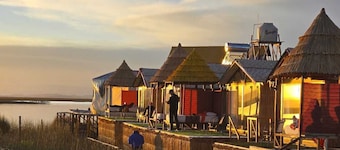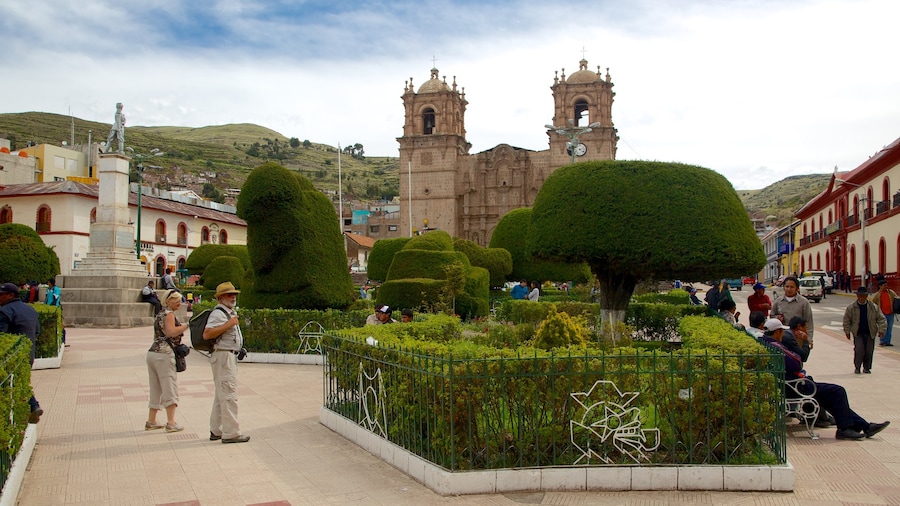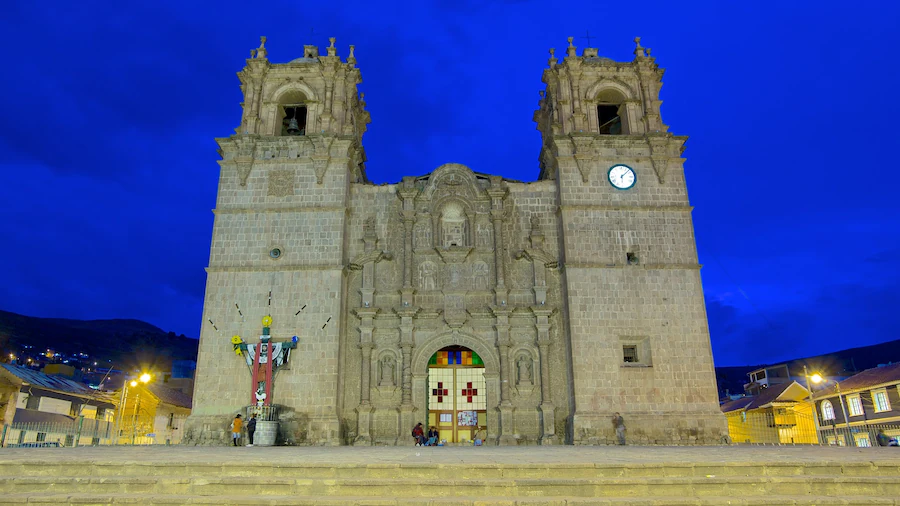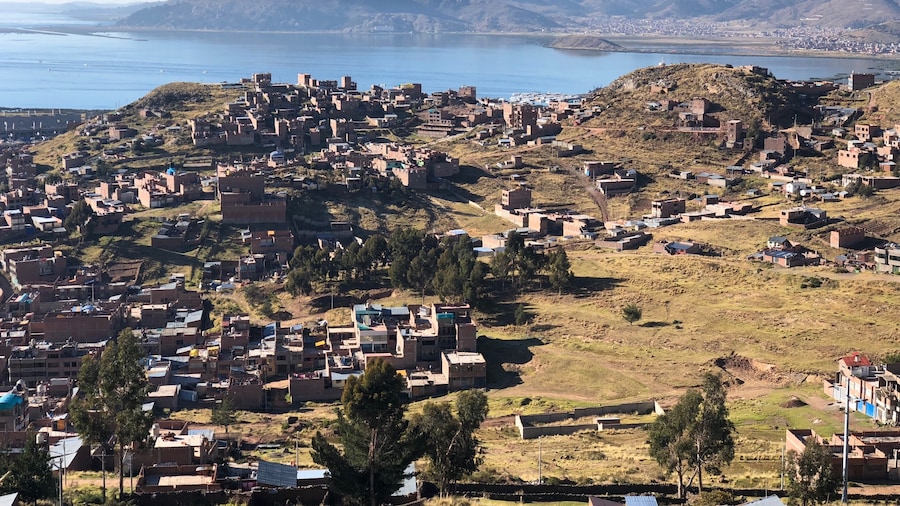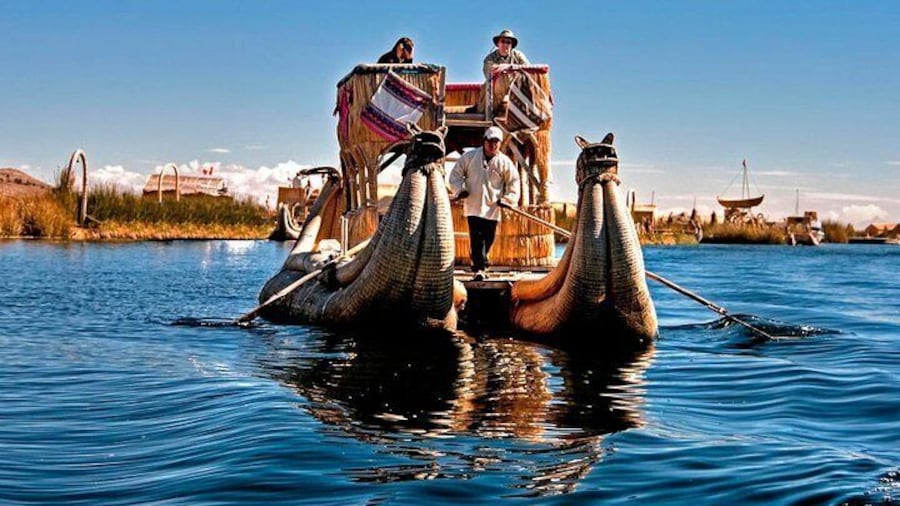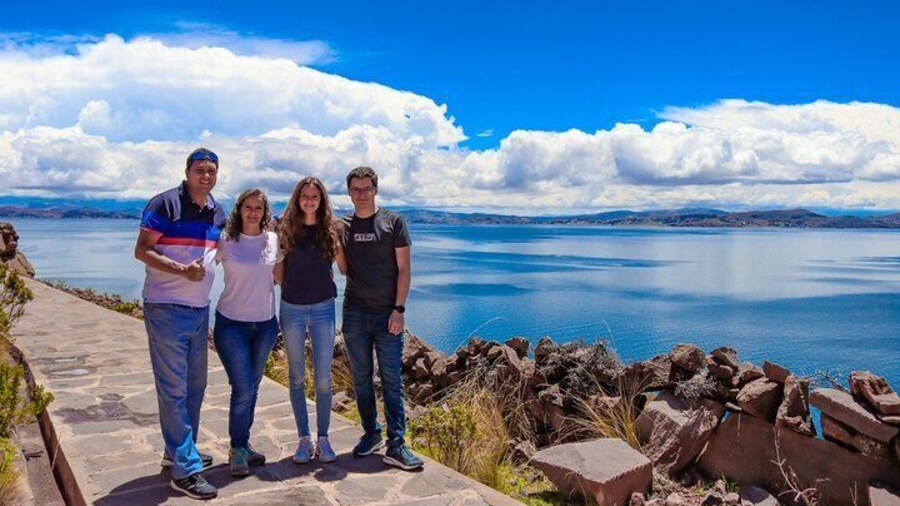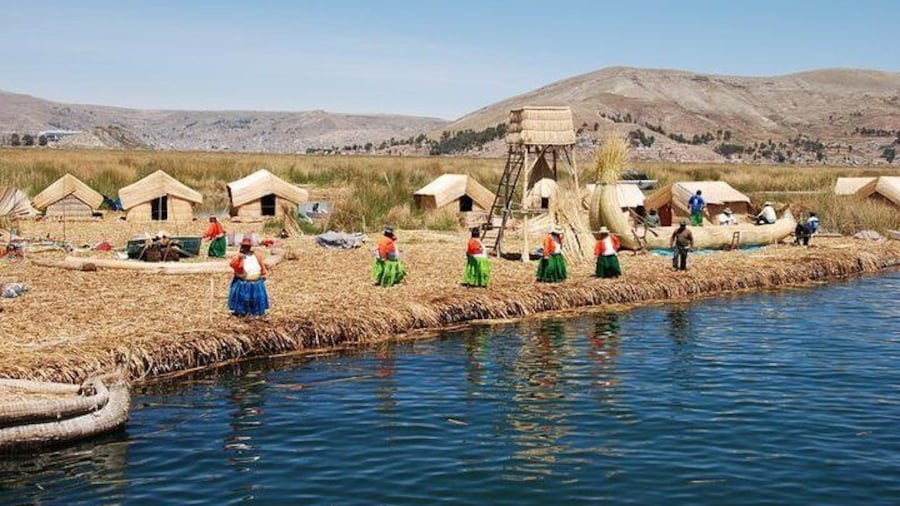Interact with the Uros people, who live on man-made islands fashioned from totora reeds, a plant which grows around Lake Titicaca’s shoreline.
The unusual and unique Uros Floating Islands are among the most popular destinations in Lake Titicaca. Find out how the islanders create and take care of their woven reed constructions, which are fabricated entirely by hand from reeds.
Though the Uros people have long lived in this region, their woven islands only came about with the rise of the Inca civilization and other tribes. In order to protect themselves, the Uros people crafted their own floating territories, which could be easily moved in order to avoid any aggressors.
Take a boat trip out to the islands to see the woven constructions up close. Each island is made from layers of totora, a reed that thrives in the shallows of the lake. The islands need constant maintenance as the lower layers break down in the water. Note the spongy feeling of the reed floor of the islands.
Many of the islands’ other constructions, including houses and, on the biggest island, a watchtower, are also built from reeds. Browse the goods on sale by the locals. Colorful patterned textile goods, such as blankets, hats and clothes, are commonly sold as are woven handicrafts.
Bring your camera to photograph the striking islands. While there, remember to be respectful of the local people, some of whom may not wish to be photographed.
Most ferries to the Uros islands stop at the main island of Kamisaraki, where you’ll find accommodations in woven hut-like structures. Eco-friendly accommodations are also available on Isla Khantati. Hop on board one of locals’ canoe-like reed boats for a small fee to travel between the islands. Many of these rafts feature impressive carved dragon heads.
The Uros Islands are located around 4 miles (7 kilometers) east of Puno. Ferries and private tour boats depart regularly from the port in Puno. Boats en route to Isla Taquile and Amantanífrequently make stops in Uros too. For some extra context on the Uros community, consider visiting with a guide who will explain the history, customs and practices of the Uros people.






